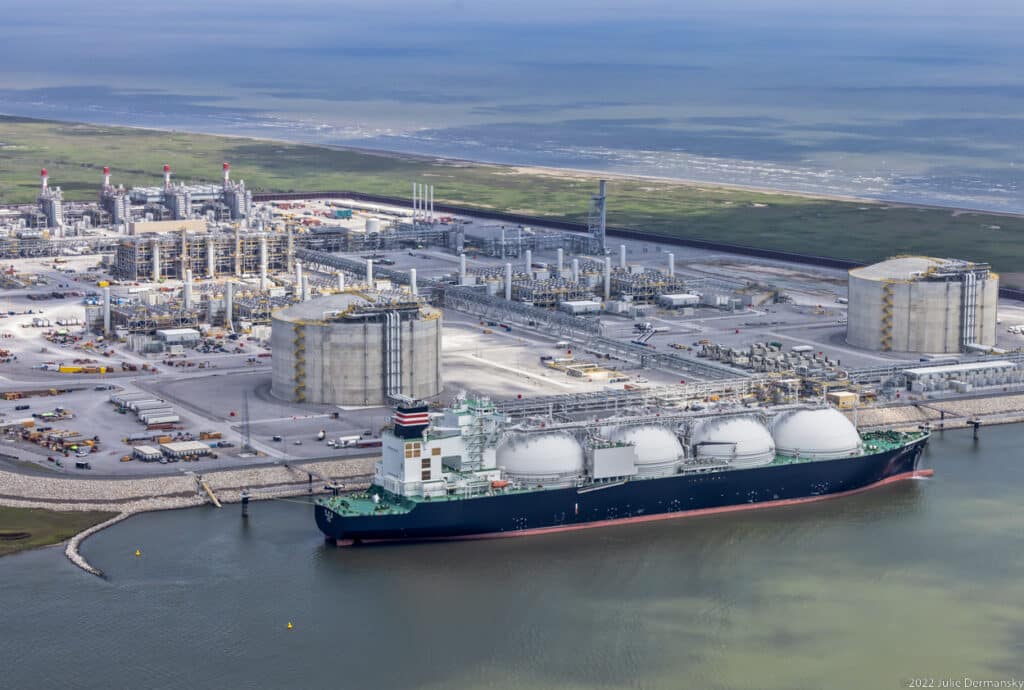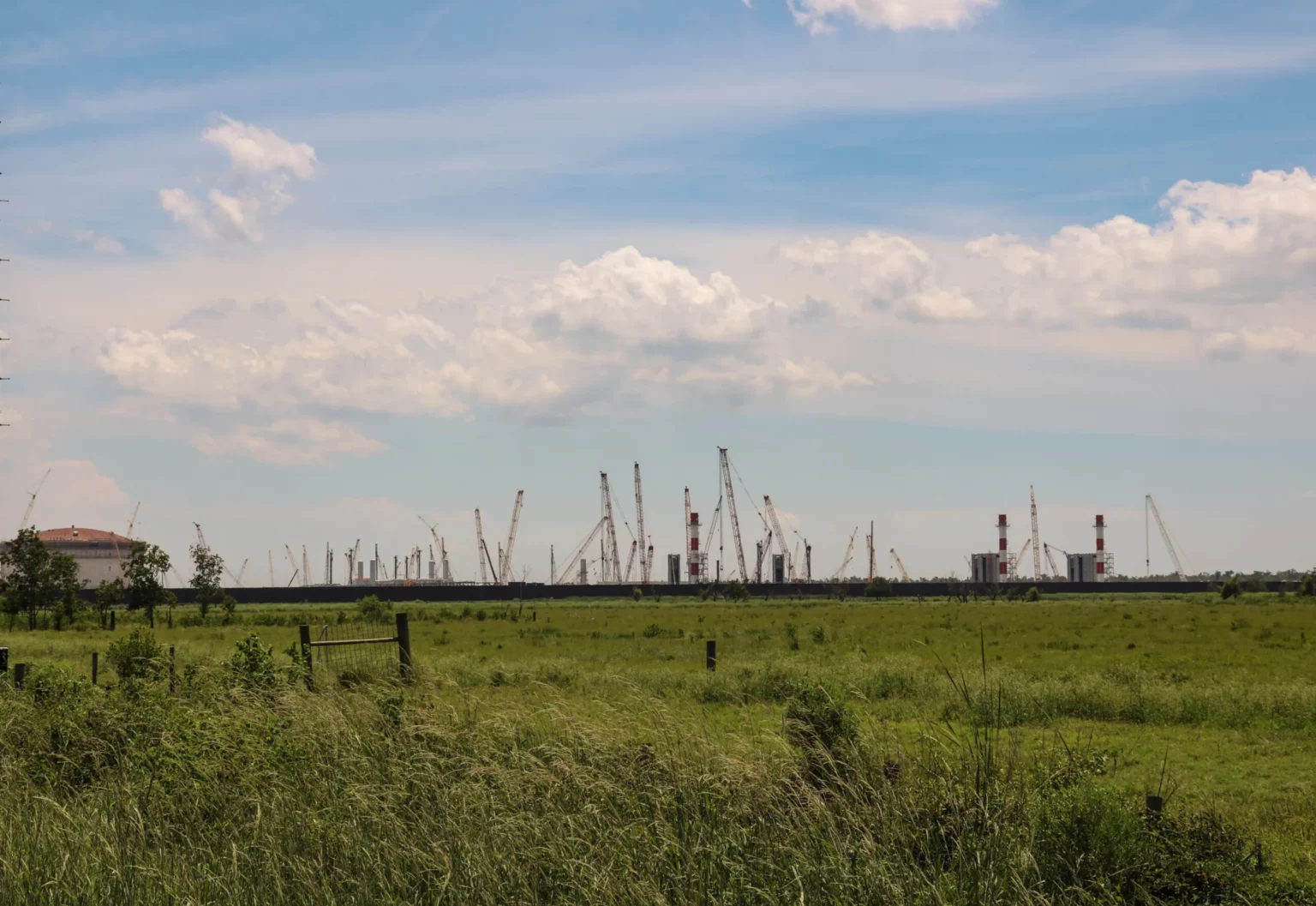This article was originally published by The Lens and is republished with permission. The Lens is the New Orleans area’s first nonprofit, nonpartisan public-interest newsroom, dedicated to unique investigative and explanatory journalism. Their mission is to educate, engage and empower readers with information and analysis necessary for them to advocate for a more transparent and just governance that is accountable to the public.
As Louisiana attempts to spew less climate-warming pollution, which disproportionately comes from industry, fossil-fuel companies have convinced lawmakers to jump onto the bandwagon of carbon capture and storage (CCS), a controversial and unproven method of addressing the issue.
They’ve also asked lawmakers to finance the technology, which critics say is classic “greenwashing” – it may sound good, but will not curb the state’s overall emission levels.
Critics of CCS point out that even corporations don’t buy into the technology, unless the money is right.
Officials from one corporation, Venture Global, repeatedly told government regulators that CCS was incompatible with the company’s plans to build three massive new liquified natural gas export terminals in south Louisiana.
The company is poised to be one of the largest U.S. exporters of liquified natural gas. In air permitting documents, Venture Global officials told the Louisiana Department of Environmental Quality that it would be “technically challenging” to capture carbon dioxide from the exhaust of on-site natural gas engines and inject it underground — called carbon capture and storage (CCS).
But the company quickly set aside its hesitations about CCS, once it became clear that Congress would pass the Inflation Reduction Act. A look back at Venture Global’s correspondence with regulators also shows that the company’s public proclamations – that CCS would improve the environmental impact of their LNG facilities – contrasted with the doubts that the company expressed to regulators in permitting documents over the past several years.
In 2018, Venture Global sent state regulators a feasibility assessment of CCS for its Plaquemines LNG facility now under construction about 20 miles south of New Orleans, near the Myrtle Grove community. The report, written by Venture Global, found CCS was “not economically feasible,” according to a 2019 environmental impact statement issued by the Federal Energy Regulatory Commission.
Venture Global did not respond to questions about its CCS plans.
Venture Global’s opposition to the concept was mirrored, using some of the exact details, in permitting documents submitted to state and federal regulators about the company’s Calcasieu Pass facility operating in Cameron Parish; and a third facility proposed nearby, called CP2.

But it wasn’t just about money. “Even if (economic) feasibility could be demonstrated, Venture Global noted that any CCS system would cause significant adverse energy and environmental impacts due to the additional water and energy needs for system operation,” according to federal permitting documents for the Plaquemines LNG facility.
Environmental groups have raised those concerns, and more, about each step of CCS.
At an EPA hearing in June about Louisiana assuming permitting authority over the injection of carbon dioxide underground, Beverly Wright, executive director of the Deep South Center for Environmental Justice, described the stakes of moving forward with proposed state LNG export terminals and CCS projects.
“Oil and gas companies are now attempting to push us back and lock us in the continued burning of dirty energy dressed up with carbon capture and storage or CCS for numerous proposed gas plants,” Wright said. “Who wants a future that repeats the past of leaking and broken-down oil and gas wells that are abandoned by companies?”
Once it became clear that federal money could offset the costs of CCS technology, Venture Global’s concerns appear to have vanished.
Tax subsidies change officials’ minds
In August 2022, one month after Venture Global submitted the CP2 application to the LDEQ, the U.S. Senate passed the Inflation Reduction Act (IRA), which included gobs of carbon capture subsidies.
A day later, Venture Global incorporated two carbon capture-focused subsidiaries.
The Inflation Reduction Act made CCS technology economically viable for LNG exporters like Venture Global, by increasing the federal tax credit from $50 to $85 per metric ton for CO2 “permanently captured” from industrial facilities and power plants. In permitting documents, Venture Global estimated that CCS would cost them $100 to $156 per ton, meaning they would be unable to profit from the tax credits alone.
Still, the company could be inflating how much the technology would cost, as most industry CCS estimates for other sectors are under $85 per ton, said Aaron Lackowski, a researcher with Empower LLC, a strategic research group focused on corporate transparency. Carbon Solutions, a CCS consulting company, had similar estimates, at about $81 per metric ton for capturing carbon from an LNG combined-cycle combustion turbine.
Corporations seemed publicly bullish on CCS while remaining pessimistic in documents submitted to regulators. “Companies were just spinning their wheels with CCS – and even backtracking on CCS plans, in Venture Global’s case – waiting for the IRA tax-credit subsidies to come through Congress,” Lackowski said. Often, what private investors want in these for-profit projects is “taxpayers footing the bill,” he said.
CCS is also an energy-intensive process. It remains to be seen whether the technology, when operating at polluting facilities, will be able to strip enough carbon from exhaust to compensate for the additional carbon emitted from operating CCS equipment.
As a result, public investment into CCS seems “speculative,” because it’s unlikely to pay off, said Lt. General Russell Honore, referring to past CCS pilot projects that have failed.
One high-profile failure was at a coal-fired power plant in Kemper County, Mississippi piloting a carbon capture project. It fell years behind schedule and billions over budget before utility regulators pulled the plug on it in 2017.
LNG is also an energy-intensive process: natural-gas-fired turbines supercool gas down to -260 degrees Fahrenheit to turn it into a liquid that’s 1/600th its original volume that can be shipped overseas. In theory, CCS technology would capture the carbon emitted by the turbines, then compress the captured carbon and transport it through pipelines to underground storage caverns.
But capturing carbon, condensing it, and pushing it through pipelines takes even more energy – and that makes the process expensive. For example, Venture Global estimated that capturing, transporting and storing the carbon from its proposed CP2 facility, in Cameron Parish, would cost $2.2 billion, according to permitting documents.
That means the carbon-capture process requires nearly 1 of every 4 dollars spent to construct the export facility – about 23% of the overall $10 billion in capital costs.
Unproven technology
CCS technology has never been demonstrated on natural-gas turbines like those that will power the Venture Global LNG terminal under construction in Plaquemines Parish, its existing Calcasieu Pass LNG export terminal in Cameron Parish and its proposed neighboring CP2 terminal.
Still, the company has announced plans to add carbon capture to all three export terminals.
It’s not the only LNG export company to hype carbon capture, despite the technological challenges. Another corporation, NextDecade, has also made claims that its LNG export terminal proposed in Brownsville, Texas will be the “greenest LNG project in the world” because of the company’s plans to incorporate carbon capture and storage.
Specific questions remain about whether CCS technology is a good fit for LNG export terminals, where carbon emissions are mixed with all sorts of other air pollutants.
CCS is best suited for facilities that produce a “high-purity CO2 stream,” according to the U.S. Environmental Protection Agency guidance. But the exhaust coming out of turbines at LNG export terminals is only about 3% to 4% carbon dioxide, according to Venture Global’s permitting documents.
Venture Global’s own doubts focused on that scientific fact. “Because the exhaust gas from a natural-gas fired [turbine] contains a low percentage of CO2, capturing CO2 from this stream is technically challenging,” the corporation wrote.
“The industry really needs to get its story straight on if this works,” said Kendall Dix, the national policy director for Taproot Earth. “We’re subsidizing something that doesn’t work.”
The technological mismatches have been overlooked in the rush to see carbon-capture as a solution to longtime emissions problems. Even while Venture Global said in permitting documents that CCS wasn’t possible, the company’s PR boasted about the environmental benefits of adding the technology to its facilities.
That spin has largely been accepted in Baton Rouge. When Venture Global announced its intent to use CCS, Governor John Bel Edwards applauded the move, saying that the technology would allow Louisiana to retain its ties to the fossil fuel industry, while addressing climate change.
“As Louisiana pursues a goal of net-zero emissions by 2050, projects that feature carbon capture and sequestration allow our state to sustain industry without sacrificing our long-term carbon-reduction goals,” the governor said.
But even if LNG facilities were able to lower the greenhouse gas emissions on site that still would not make the industry compatible with climate goals, said Lew Daly, a senior fellow with Just Solutions, an organization working for equitable climate solutions.
“That is a very small fraction of the life cycle greenhouse gas emissions of natural gas, so it could really be about getting paid for greenwashing,” Daly said, noting that CCS would not address methane leaks from wellheads and pipelines or the emissions of burning the natural gas sent overseas.
While oil and gas companies tout that CCS projects could curb up to 90% of carbon emissions from facilities, that does not match the track record of CCS pilot projects, many of which have failed to meet their emission-reduction goals.
“We think the science has been extremely exaggerated on the reliability of capturing carbon and transporting it,” said Honore, who believes that the federal government should incentivize more realistic ways of addressing climate warming emissions.
Honore would prefer to see government focus on getting corporations to burn fewer fossil fuels instead of using public money to subsidize corporate use of undemonstrated technologies.
“Making companies reduce their pollution — particularly the methane releases that are associated with the natural gas production of plastics and LNG — would be a better strategy, he said.
Subscribe to our newsletter
Stay up to date with DeSmog news and alerts






